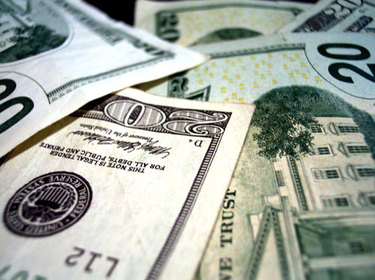Published by: Dave Boehnlein on 04/05/2018

A design process must have a goal (an intended outcome). What is it we are trying to achieve with this design? On one hand, permaculture's ethical basis defines part of that for us. We wish to see ecological processes continue unhindered to engender a healthy ecosystem. However, that's just one piece of the equation. On the other hand, addressing "care of people" will look different for everyone. Therefore, human goals, along with care of the earth, intertwine to define what we want the end product of our design process to look like.
I believe that economic viability is something that one would define early in their process as part of care for people. That definition will inform what the end product will look like. The write up of these end goals of the design process is often referred to as a "design brief". The design brief lists out all the parameters that will affect your decisions and, ultimately, steers the design.
The economic viability piece will also look different for different people. For instance, a single landowner who is passionate about wildcrafting, lives in a van, and makes all his or her own clothes will have a different definition of economic viability than a typical suburban family of four that just heard about permaculture and wants to take steps toward sustainability in spite of their rather sizable mortgage. How about folks who, for right or wrong, are independently wealthy? It will certainly look different for these people as well. In any case, the economics become an important part of your design brief.
Therefore, simply by creating a permaculture design for the space in which you dwell, you will address the question of economic viability (the question of how one will pay for the excavator, plant material, construction materials, etc. will always come up). Hopefully, the design will result in a resilient system of potential income streams from many sources.

Conversely, it may result in saving real dollars through improved efficiency or creative planning, which, in reality, is just as good as increasing income. This could mean increasing food production to decrease grocery bills, using solar hot water panels to decrease electric or gas bills, or building a sauna and hot tub so you can cancel your gym membership. It all depends on the goals of the designer and/or client. This is how I see the permaculture design process directly impacting the economic viability of both designer’s and client’s lives in our current economic paradigm.
However, there seem to be some questions cropping up about the validity of our current economic paradigm. During the permaculture design process we should also be looking at a future where economics work differently; a future where resiliency must exist on a local level; a future where everyone in a community is expected to be a net producer, not just a consumer.
This is why an elegant permaculture design must both allow one to meet their economic needs today as well as in the future. There is actually a pitfall here that excited permaculturists often run into. They plan really well for the future, but they do not focus on obtaining a yield today. What good are chestnut trees that will bear 12 years down the road if you have to sell your land and move back to the city in search of a job in two years because your money ran out? Those trees probably won't even make it to year 12. The savviest permaculturists will always be planning for success in our current paradigm while they simultaneously plan for change. This is a permaculture principle, in fact.
Hopefully, going through the process of permaculture design will lead one to understand economics similarly to ecology. Often monocultures are not functional for a variety of reasons. There are similar reasons why a single income stream is fraught with risk. Every business school freshman learns that you one should maintain a diverse portfolio. What happens during a lousy veggie year? Hopefully allows one to bring in money from some other land-based income sources (selling nursery stock, selling baskets, selling goat milk, offering guided tours, having a B&B, etc.). Exploring this end of permaculture design is often overlooked.
Non-land based income is good too. Wait tables, deliver the mail, be a computer programmer. All of one's income doesn't have to come from his or her land. The concept of "self-sufficiency" is often confused with permaculture and misapplied. Some people think that all of their income must come from their land. Others even take it a step further and they think they have to grow all of their own food, produce all of their own energy, and make all of their own tools. In reality, self-sufficiency isn't something we want to apply at the individual level. I haven't seen anyone attain this yet. However, it makes a lot of sense at a community, village, or bioregion scale. You don't have to grow every crop. It's okay to grow peas and trade them to your neighbor for peaches. You can start to see how looking at the bigger social/community picture becomes critical to permaculture design.

When we do designs for clients we often try to create as many micro-business opportunities as possible for them.
These could include:
And yes, this list also includes education and design services. However, those certainly aren't the only way to turn a buck with permaculture. I believe Bill Mollison, one of the founders of permaculture, himself said, "Theoretically, yields are limited only by the imagination of the designer." I tend to agree with him.
This piece originally appeared on: Terra Phoenix Design Blog
